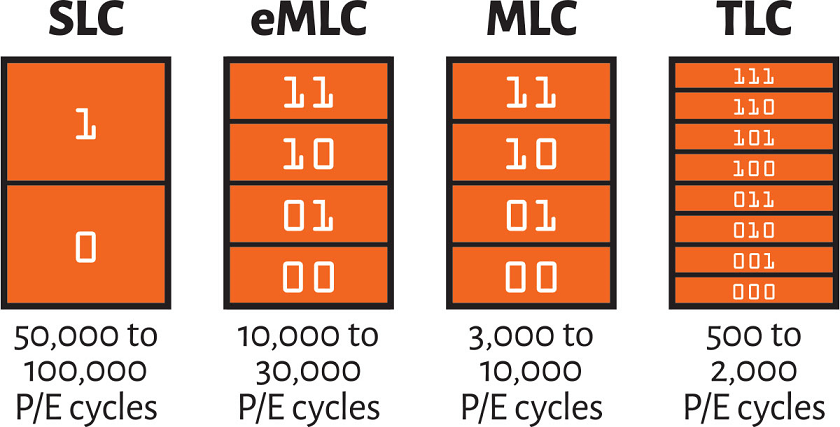Computer Components
Computer Memory
Computer Network
Computer Virus
Number Systems
Shortcut Keys
Terms
- What is a Browser
- Google Chrome
- Mozilla Firefox
- Internet Explorer
- Windows
- Computer Ports
- program
- Printers
- Microphone
- Monitor
- Motherboard
- Incognito Mode
- Mouse
- Memory Card
- CD
- ID
- ISO
- character
- server
- Keyboard
- Remote
- webcam
- Data
- URL
- keypad
- hub
- File
- Bytes
- Exabyte
- Gb
- Kilobyte
- Megabyte
- Petabyte
- Terabyte
- What is HDD
- What is SSD
- Memory vs Storage
- Non-volatile memory
- What is M.2 SSD
- How To Reboot A Computer
- Multi-Level Cell
- NAND Flash Memory
- What is the lock screen
- Block Storage
- Universal Serial Bus
- VRAM
- Cloud Hosting
- CompactFlash card
- What is WAP
- Classification of Memory
- Hardware vs Software
- Uses of Computer
- Uses of Internet
- Abacus
- Best Proxy Servers
- SSL VS. TLS
- Web Console
- GPU
- Difference Between LAN and WAN
- SSD and HDD
- Computer
- Data Migration
- JEDEC
- MLC vs. TLC vs. SLC NAND Flash
- VirtualBox Installation
- Num Lock
- PC
- MAC
- Continuous Data Protection
- Persistent Storage
- What is Bit
- Software Definition
- What is a File System
- When was the first computer invented
- How many generations of the computer
- Minicomputer
- Fourth Generation of Computer
- What is a Username
- What is ALU
Questions
MLC vs. TLC vs. SLC NAND Flash
SSD's underlying NAND architecture will vary from model to model, and those variations will be discussed in this article. There are various NAND flash types-SLC, MLC, eMLC and TLC, and each has distinct characteristics that impact the best for our business storage.
Flash has revolutionized corporate data mining. SSD packaging allows storage subsystems and arrays to offer extensive device efficiency relative to HDDs. It also enables us to do quick work out of business analytics and other workloads. Flash memory makes brisk boot times, quick program starts, and fast data transfers on PCs and mobile devices.
SSDs are not even as vulnerable to disruption from sudden motions and physical shocks because moving parts are absent from flash storage. They also take less fuel than HDDs, which is another advantage.

Different Types of NAND FLASH
NAND flash is a type of non-volatile storage architecture, which is used in SSDs and memory cards. It gets its name from the logic gate (NOT-AND) that decides how digital data is stored in flash computer chips.
Enterprise Multi-Level Cell (EMLC)
Enterprise Multi-Level Cell is a more complicated variant of the MLC NAND flash that fills the difference between SLC and MLC in efficiency and endurance. EMLC drives cost more than MLC drives, but their counterparts cost much less than SLC. Although it only holds two bits per cell, the controller of an eMLC drive performs data positioning, wear leveling and other storage operations in a manner that increases the useful life of an eMLC SSD.
Single Level Cell (SLC)
Single-Level Cell SSDs store one bit. It is a design that produces improved endurance, accuracy and efficiency. SLC is the go-to flash technology for essential business software and computing facilities. Generally, it holds the biggest price tag.
Triple Level Cell (TLC)
Triple-Level Cell NAND flash stores three bits per cell, the least costly, and usually used for comparatively low efficiency and durability requirements in consumer-grade electronics. TLC-based storage modules have rarely been used in business environments, which is best suited for read-heavy applications. Even recent enhancements in flash architectures provided the platform a role in read-intensive enterprise storage applications, including 3D NAND and endurance-enhancing data positioning and error correction techniques.
Multi-Level Cell (MLC)
Despite the buyer-grade flavor of the flash, Multi-Level Cell structures can accommodate 2 bits per cell. Although reasonable use of space might be packing more than one bit into a memory cell, it comes at the expense of lower useful life and reduced efficiency. MLC SSDs make it economically easy to add flash storage to PCs and laptops.
NAND vs. 3D NAND
3D NAND or Vertical NAND is one of the major technologies to enter the flash storage industry. As the word suggests, it utilizes a stacked architecture to arrange the memory cells within a Solid-state drive (SSD) instead of the planar or flat structure of previous implementations. In effect, relative to 2D NAND, this architecture helps vendors to pack more capacity at a lower cost into less physical space. It also produces higher speeds, better durability and lower specifications for fuel. 3D NAND SSDs are sold by most large SSD vendors today.
For example, Samsung used this technology to load 8 TB of flash storage in its latest NVMe NF1 SSD. The Next-Generation Small Form Factor component measures only 11 cm by 3.5 cm, enough to fill a 576 TB all-flash storage capacity on a 2U server if money is not a matter.
How to Choose Between Triple Level Cell, Multi-Level Cell and Single Level Cell SSDs
IT buyers looking for the best quality SSD should expect to shell out much more for SLC than eMLC, MLC and TLC.
There are many factors to consider while attempting to get the most value for your storage buck. An SLC SSD makes perfect sense for critical application workloads and 24/7 databases that demand fast reliable performance. Of course, not all workload needs fast speeds, and price or performance must also be considered.


